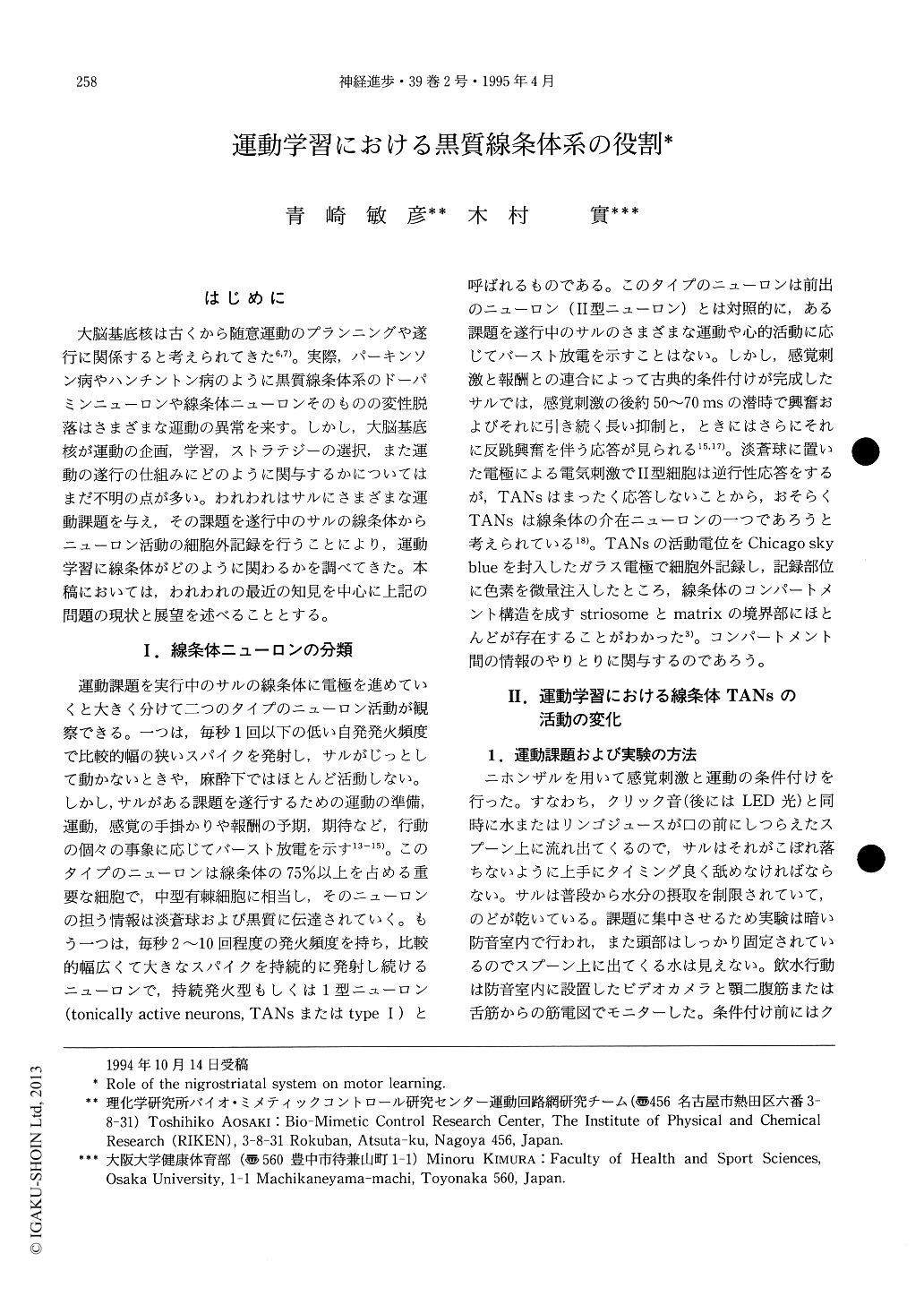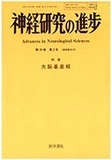Japanese
English
特集 大脳基底核
運動学習における黒質線条体系の役割
Role of the nigrostriatal system on motor learning
青崎 敏彦
1
,
木村 實
2
Toshihiko AOSAKI
1
,
Minoru KIMURA
2
1理化学研究所バイオ・ミメティックコントロール研究センター運動回路網研究チーム
2大阪大学健康体育部
1Bio-Mimetic Control Research Center, The Institute of Physical and Chemical Research (RIKEN)
2Faculty of Health and Sport Sciences, Osaka University
pp.258-268
発行日 1995年4月10日
Published Date 1995/4/10
DOI https://doi.org/10.11477/mf.1431900633
- 有料閲覧
- Abstract 文献概要
- 1ページ目 Look Inside
はじめに
大脳基底核は古くから随意運動のプランニングや遂行に関係すると考えられてきた6,7)。実際,パーキンソン病やハンチントン病のように黒質線条体系のドーパミンニューロンや線条体ニューロンそのものの変性脱落はさまざまな運動の異常を来す。しかし,大脳基底核が運動の企画,学習,ストラテジーの選択,また運動の遂行の仕組みにどのように関与するかについてはまだ不明の点が多い。われわれはサルにさまざまな運動課題を与え,その課題を遂行中のサルの線条体からニューロン活動の細胞外記録を行うことにより,運動学習に線条体がどのように関わるかを調べてきた。本稿においては,われわれの最近の知見を中心に上記の問題の現状と展望を述べることとする。
Dysfunction in the striatum results in major sensorimotor and cognitive defects, exemplified in Parkinson's disease and Huntington's disease. We review here a series of studies suggesting that the nigrostriatal system participate in sensory-motor learning and that widely spaced striatal neurons may serve to coordinate distributed, modular basal ganglia networks.

Copyright © 1995, Igaku-Shoin Ltd. All rights reserved.


